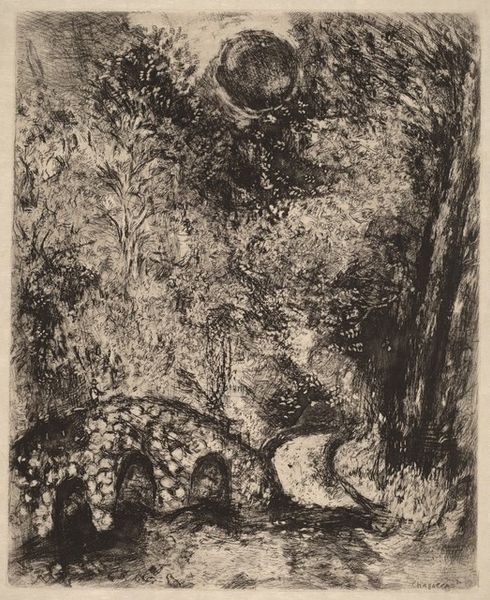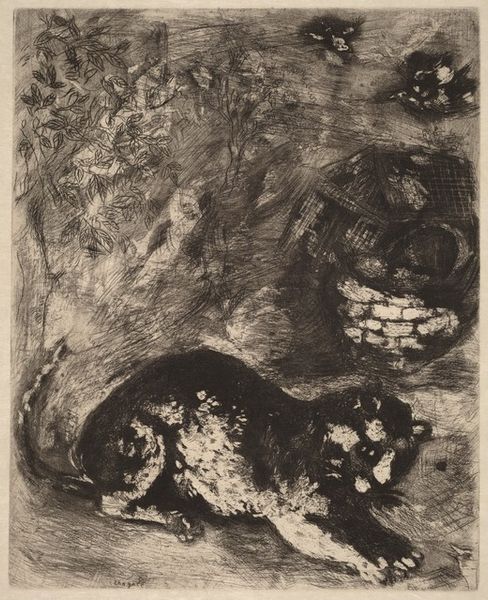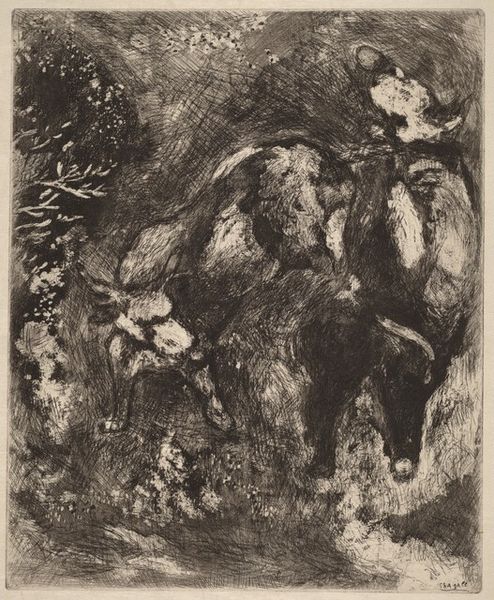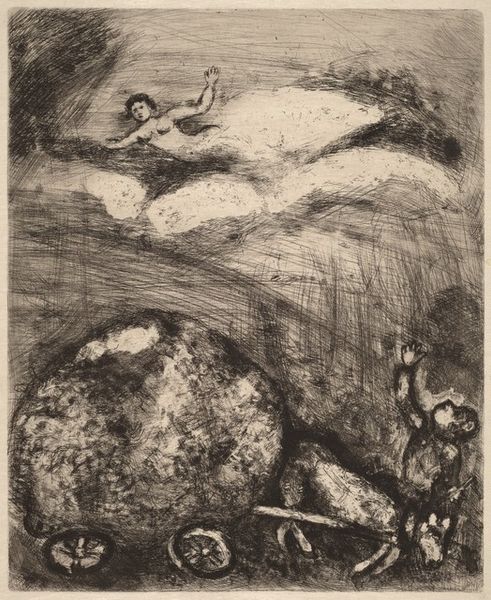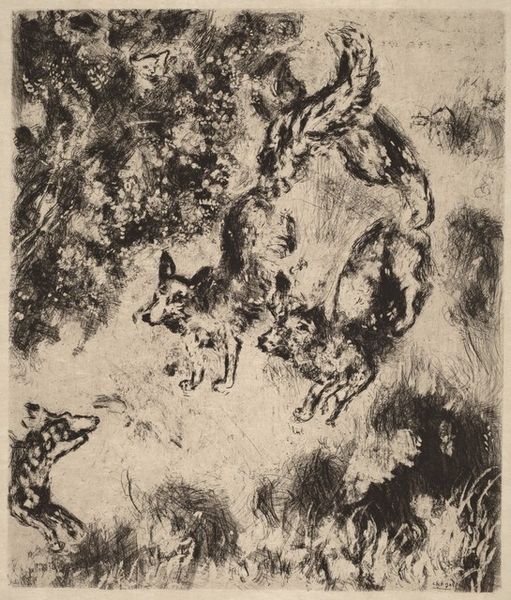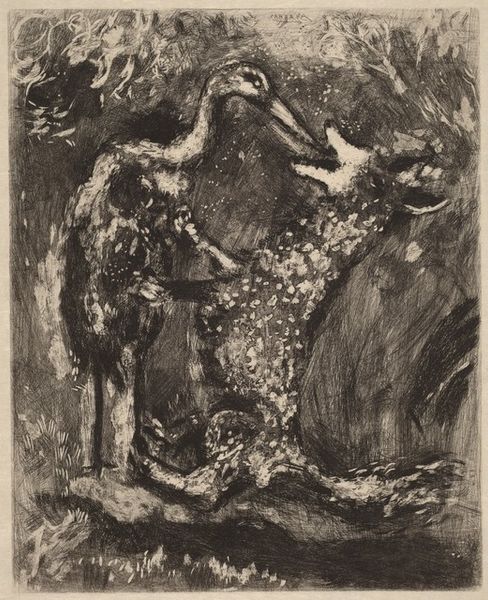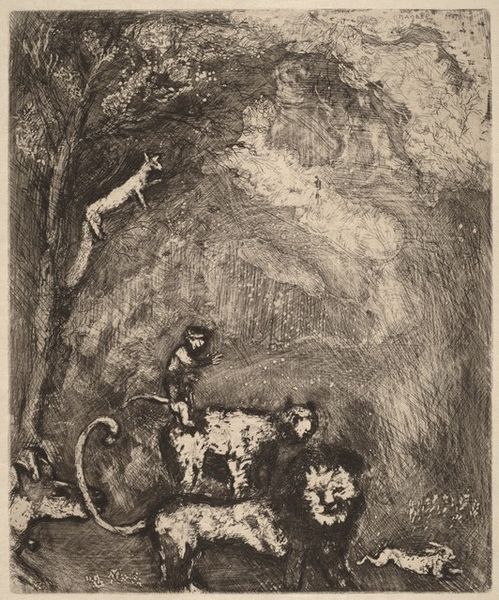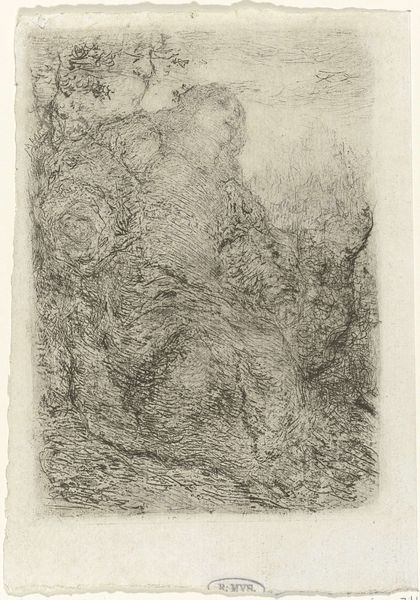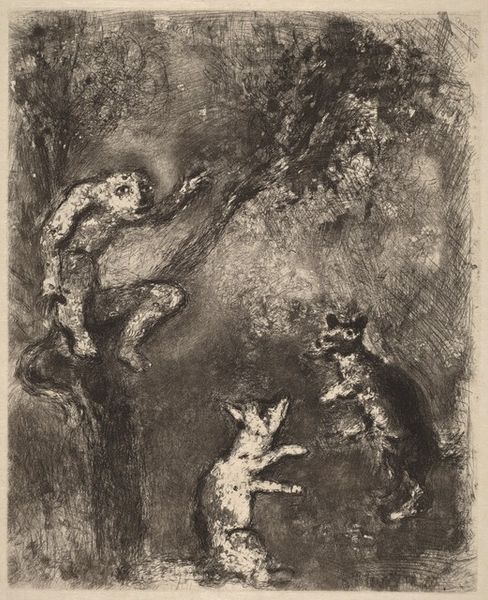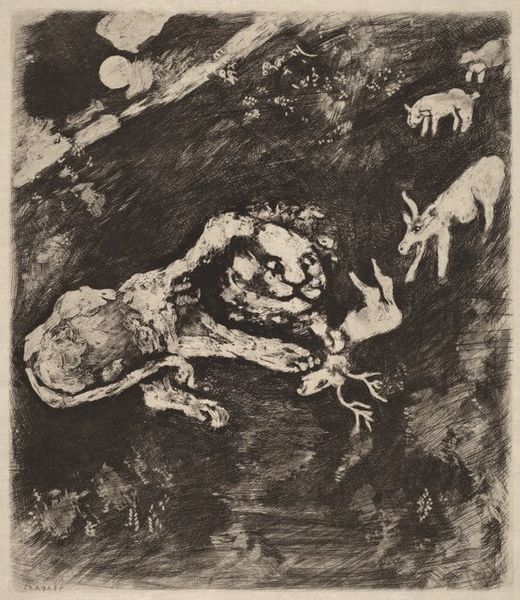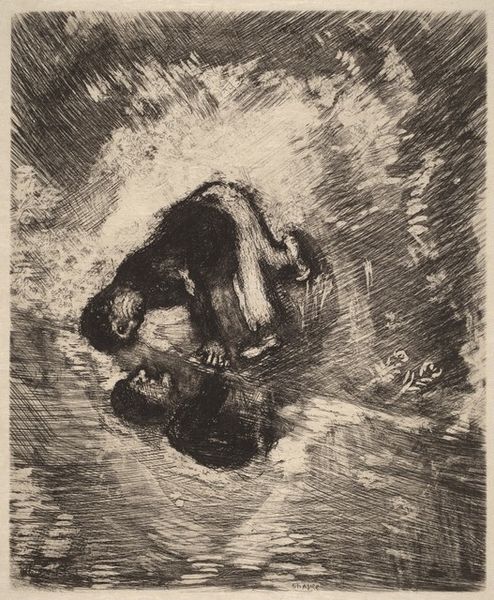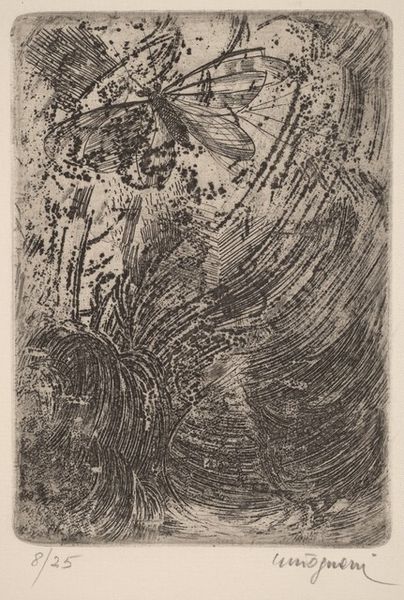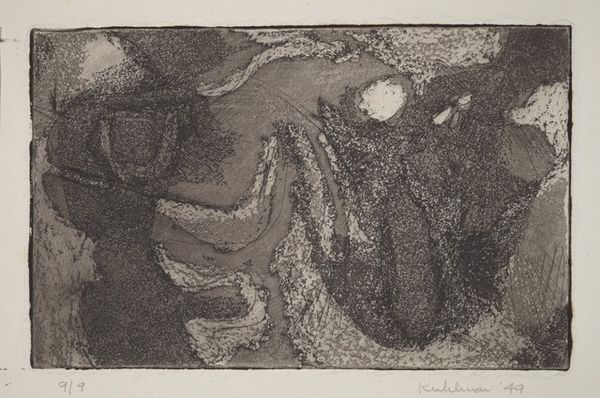
print, etching
#
cubism
#
animal
# print
#
etching
#
figuration
#
modernism
Copyright: National Gallery of Art: CC0 1.0
Curator: This etching by Marc Chagall, dating from between 1927 and 1930, is called "The Two Cocks." The monochromatic tones, achieved through the etching process, give it a very distinct feel. Editor: It looks almost spectral. The density of the lines gives it a sort of restless, anxious energy. Curator: Exactly! Think about the symbolism inherent in the rooster, or cock, image. Throughout history, the cock has been associated with virility, vigilance, even aggression. In Christianity, it symbolizes the Passion of Christ, tied to the story of Peter's denial. Editor: That is such a masculinized set of significations for a symbol that really does nothing on its own but get caught up in patriarchal value systems. The two cocks in this image seem poised for confrontation, but also, with their kind of ghostlike depiction, for an encounter with something larger. Curator: Indeed, that spectral quality links them to cycles of memory and symbolic recurrence. The image, particularly through the Modernist lens, invites us to explore how our current cultural moments and trends relate to history. Do these two cocks appear equally strong? Do they come across as vulnerable? What is the impact of the Cubist techniques? Editor: Absolutely vulnerable! What does their virility mean if it feels so fragile and caught up in a larger web of meaning? And that anxious etching style really makes this apparent. Curator: Chagall's rendering evokes these layers. By giving a common emblem a twist and a darker mood, he shows the emotional impact of history as both inheritance and burden. Editor: It becomes not a simple image but rather something to critique, destabilize and reflect on. An assertion that images always carry more than they initially seem.
Comments
No comments
Be the first to comment and join the conversation on the ultimate creative platform.
